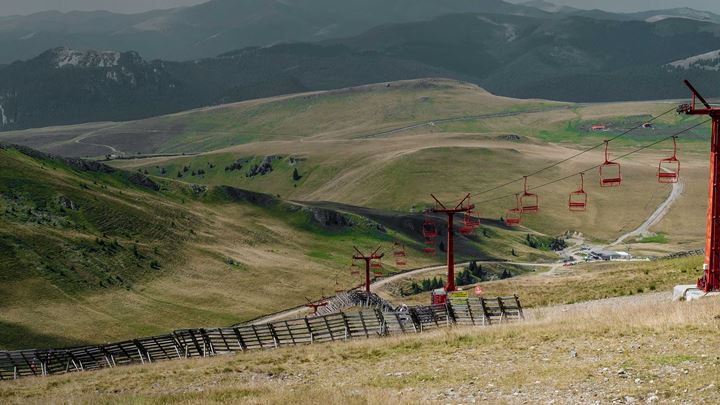Investing basics library
Dip into a collection of practical articles on the foundations of investing, whenever you need them
-
Investing Basics: What are Bonds?
Continue ReadingInvesting Basics: What are Bonds?
Unlike a share, where investors literally buy a share in a company’s profits, a bond is an ‘IOU’ from a company to an investor who loans it money
Author: -
Investing basics: how to pick the right fund 'share class'
Continue ReadingInvesting basics: how to pick the right fund 'share class'
One of the least concerns a fund investor should have is that of a lack of choice – writes Tabitha James of DIY Investor Magazine
Author: -
Investing Basics: Portfolio Management – should you stay or should you go?
Continue ReadingInvesting Basics: Portfolio Management – should you stay or should you go?
DIY Investor is dedicated to long term wealth creation; sister site Muckle wears its heart on its sleeve in its mission to educate and engage the next generation of investors – ‘mony a mickle maks a muckle’ is pretty much Savings and Investment 101 – writes Hannah Barnaby.
Author: -
Investing Basics: What is a P/E ratio and how to use it to create a fair value calculation for shares?
Continue ReadingInvesting Basics: What is a P/E ratio and how to use it to create a fair value calculation for shares?
With all the caveats, P/E is likely to remain near the top of the list of commonly used valuation measures for shares in a wide range of, though not all sectors. It embraces complex considerations within a simple formula. It has an intuitive validity which is borne out by much more complex analysis, but is universally understood.’ writes Christian Leeming
Author: -
Investing Basics: how to choose an investment trust
Continue ReadingInvesting Basics: how to choose an investment trust
Most people are broadly familiar with the concept of a ‘fund’ when it comes to investing but, there are a number of different fund types – writes Christian Leeming.
Author: -
Investing basics: Investment Trust sectors
Continue ReadingInvesting basics: Investment Trust sectors
Investment trusts were once dubbed the ‘best kept secret in the City’; not any more it seems, as investors have embraced the fact that some trusts have consistently increased their dividends over decades, and have done so in the face of enormous headwinds – just one of which is the current COVID-19 pandemic.1 - writes Hannah Barnaby
Author: -
Investing Basics: Growth or value investing?
Continue ReadingInvesting Basics: Growth or value investing?
Whatever style an investor adopts, the goal is always to identify and buy an asset in the hope and expectation that its price will increase; whilst the ambition may be simple enough, its achievement may be altogether trickier – how do you judge whether your investments are positioned to get the best possible return? – asks Christian Leeming.
Author: -
Investing Basics: compound interest
Continue ReadingInvesting Basics: compound interest
Compound interest is the eighth wonder of the world. He, who understands it, earns it … he who doesn’t … pays it.’ Albert Einstein
Author: -
Building a really simple investment portfolio
Continue ReadingBuilding a really simple investment portfolio
For those new to investing, the sheer choice of investment options can be daunting, but it should be possible to construct a simple, well diversified investment portfolio...
Author: -
Funds: the basics
Continue ReadingFunds: the basics
Funds, traditionally referred to as mutual funds, are collective investments that pool investors’ money to buy and sell shares or other assets in a range of companies to maximise profits and reduce risks.
Author: -
How to construct an equity portfolio
Continue ReadingHow to construct an equity portfolio
Portfolio construction gets less attention than picking stocks, but it can have a profound effect on the risk you are exposed to and the returns you achieve
Author: -
Understanding property investments and building your fortune
Continue ReadingUnderstanding property investments and building your fortune
As an asset class it took a battering after Brexit but there are a number of reasons why investors might consider property as part of a diversified portfolio over the long-term.
Author: -
The cash conundrum: dealing with the cruelest tax
Continue ReadingThe cash conundrum: dealing with the cruelest tax
Anyone with even a passing knowledge of the economic landscape of the last decade won’t need reminding that the value of investments can go down as well as up. One response to the possible volatility of financial markets would be to put all your cash in the bank as, in theory, this should be protected by a national compensation scheme.
Author: -
How to choose and open a Stocks and Shares ISA
Continue ReadingHow to choose and open a Stocks and Shares ISA
An Individual Savings Account (ISA) is a flexible and tax-efficient vehicle. There are a number of ISA options available to investors. One of these is a £20,000 annual allowance for a cash ISA, which operates in much the same way as a typical savings account. Another is a stocks and shares ISA, which allows you to invest in a range of different asset classes and instruments.
Author: -
How much research do I need before investing
Continue ReadingHow much research do I need before investing
Before getting into the details of what information is available to research for certain types of investments, deciding exactly what type of investment is right for you should be the very first piece of research you do.
Author: -
Shares with high dividends. Good or bad sign?
Continue ReadingShares with high dividends. Good or bad sign?
When it comes to dividends, understanding the difference between dividend yield and dividend growth can be a key factor when deciding what companies to invest in. Dividend yield is calculated by dividing the annual dividend paid per individual share by the current share price
Author: -
How to trade in a volatile market
Continue ReadingHow to trade in a volatile market
Everyone who invests in the stock market has to deal with some measure of volatility: the fact that their investments will go up as well as down. In times of global uncertainty, the possibility of volatility is higher than usual, meaning that many investors have had a rollercoaster ride.
Author: -
What is an OEIC?
Continue ReadingWhat is an OEIC?
An Open Ended Investment Company (OEIC) is broadly similar to a unit trust in that it is an open ended collective investment that expands and contracts the number of units in circulation. Unlike a unit trust, each OEIC operates as a limited liability company, quoted on the London Stock Exchange and unlike ‘unit holders’ that invest in unit trusts, those invested in OEICs are ‘shareholders’ in that investment company; OEICs are governed by company law rather than trust law.
Author:
















